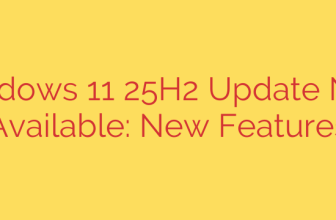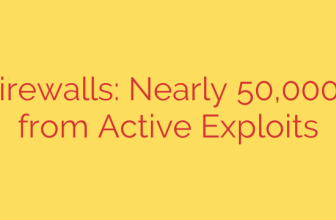
LockBit Unleashes Its Most Advanced Ransomware: A Triple Threat to Windows, Linux, and VMware
The ransomware landscape has just become significantly more dangerous. A highly sophisticated variant of the notorious LockBit ransomware has emerged, and its capabilities represent a major escalation in the threat to organizations worldwide. This new version is not limited to a single operating system; it is a cross-platform malware designed to simultaneously target Windows, Linux, and VMware ESXi virtual environments, making it one of the most versatile and destructive ransomware strains seen to date.
This evolution marks a critical shift in cybercriminal tactics. By developing a single tool that can cripple the core infrastructure of most modern businesses, attackers can now streamline their operations and maximize their impact with unprecedented efficiency. Understanding this triple threat is the first step toward building a resilient defense.
The Unprecedented Threat: Why This LockBit Variant is Different
What makes this new strain so formidable is its unified approach. Previously, ransomware groups often needed separate tools and techniques to attack different operating systems. This latest version, often referred to as LockBit 3.0 or “LockBit Black,” is built on a shared codebase that allows it to execute its malicious payload across the three most common enterprise environments.
The key danger lies in its ability to compromise an entire network from multiple angles. An attacker who gains a foothold on a single Windows workstation can now potentially pivot to encrypt critical Linux servers and, most devastatingly, the VMware ESXi hypervisors that host an organization’s virtual machines. This ability to encrypt entire virtual infrastructures at once is a game-changer, capable of bringing business operations to a complete and immediate halt.
Targeting the Crown Jewels: The Attack on VMware ESXi
For years, cybercriminals have recognized that virtual environments are the nerve center of modern IT. By targeting VMware ESXi, the platform that underpins countless corporate servers, databases, and applications, this new LockBit variant goes straight for the jugular.
The attack methodology is chillingly effective. Once the malware gains access to the hypervisor, it can leverage command-line tools, such as esxcli, to perform several malicious actions:
- Forcibly shut down running virtual machines (VMs) to ensure their virtual disk files (.vmdk) are not locked and can be encrypted.
- Execute the encryption routine on the datastores, rendering all hosted VMs completely unusable.
- Cover its tracks by deleting logs and other forensic evidence.
Encrypting the hypervisor level is the digital equivalent of destroying the foundation of a building. Recovery is exponentially more complex than restoring a few individual servers, as the entire virtualized ecosystem must be rebuilt.
Actionable Security Measures to Defend Against Cross-Platform Ransomware
Defending against such a versatile threat requires a robust, multi-layered security posture. Hoping your Linux servers or ESXi hosts are immune is no longer a viable strategy. Organizations must act now to harden their defenses.
Implement Rigorous Patch Management: The number one defense is keeping systems updated. Ensure your Windows, Linux, and especially your VMware ESXi and vCenter servers are patched against all known vulnerabilities. Attackers frequently exploit old security flaws to gain initial access.
Enforce Strict Access Controls: Limit who can access critical systems. Mandate Multi-Factor Authentication (MFA) for all administrative accounts, including those for vCenter, remote desktop protocol (RDP), and SSH on Linux servers. Adhere to the principle of least privilege, giving users only the access they absolutely need.
Secure Your Backup Strategy: Backups are your last line of defense. Follow the 3-2-1 rule: three copies of your data, on two different media types, with at least one copy stored offline or in an immutable, air-gapped location. Cloud-based immutable storage can be highly effective against ransomware that tries to delete backups.
Utilize Network Segmentation: Do not allow your network to be a flat, open field. Segment your network to isolate critical systems. This can prevent an attacker who compromises a user’s workstation from easily moving laterally to your server infrastructure or ESXi hosts.
Deploy Advanced Endpoint Protection: Traditional antivirus is not enough. Use an Endpoint Detection and Response (EDR) solution on your Windows and Linux endpoints. For virtual environments, explore security solutions specifically designed to monitor hypervisor activity for anomalous behavior.
The emergence of this cross-platform LockBit variant is a clear signal that ransomware actors are continuously innovating. A passive defense is a failing one. Organizations must proactively strengthen their security controls across their entire technology stack—from the user desktop to the virtualized core—to stand a chance against this evolving threat.
Source: https://go.theregister.com/feed/www.theregister.com/2025/09/26/lockbits_new_variant_is_most/








